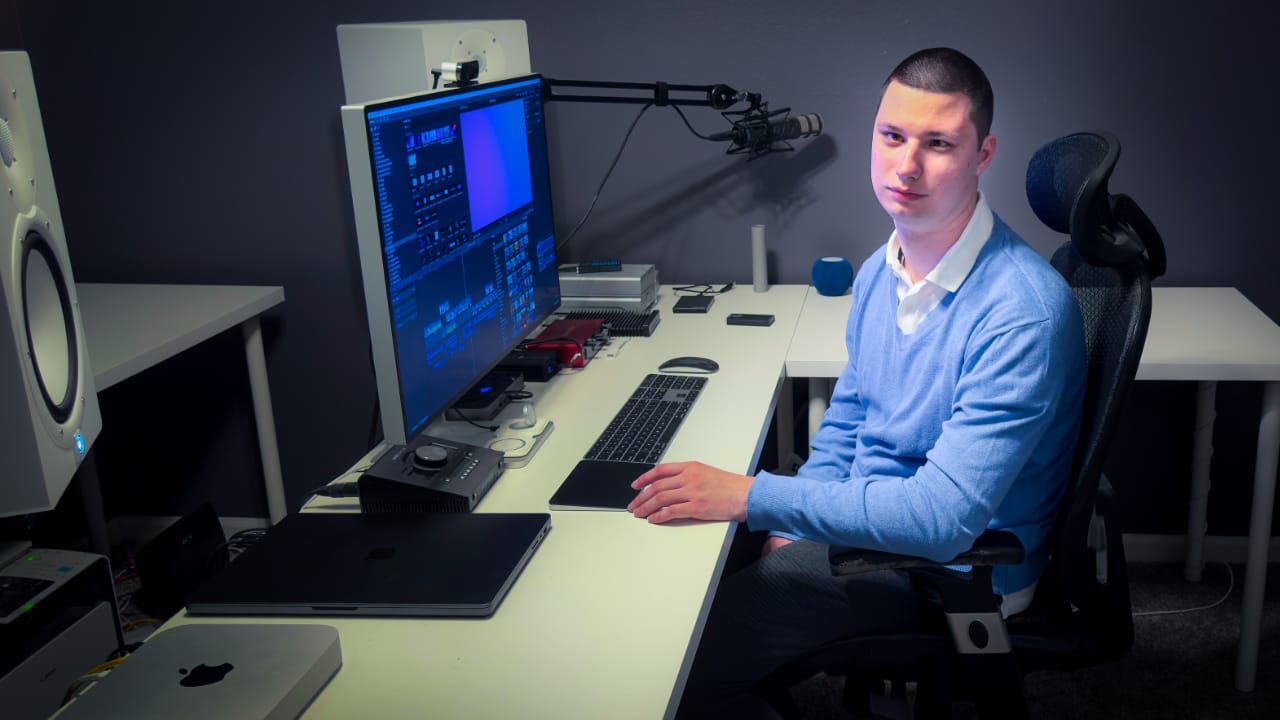
How Alteon and Apple helped talented video editor Jacob Rush, who was born with Cerebral Palsy and only has the use of one arm, get up to full speed and demonstrate his editing talent without hurdles.
Living with a disability is unimaginable for people who have never had any mobility or sensory issues. Some get a glimpse into disability when they break an arm or a leg and realise how hard it is to get by. But even then, they can't fully envisage what it would be like for it to be a permanent feature in their lives. Statistically, it is likely to be a non-disabled developer or designer who creates user interfaces. Making a great UI is hard, but going that extra mile and building accessibility into the software is, ironically, not much harder. All it takes is a bit of time and someone able to explain the issues first-hand and suggest ways to accommodate them.
What do we mean by "accessibility"? That's pretty simple to define: it's making software that people living with a disability can use as well as if they didn't have a disability.
Jacob Rush is a 25-year-old Floridian video editor. He owns his own company and has a busy schedule, working for numerous clients. He was born with a condition called Cerebral Palsy (CP) that has left him with the use of only one arm. He typically uses a leg brace for strength and stability to get around.
As an Apple Final Cut Pro user, Jacob is familiar with the 2.8 trillion dollar company's rigorous efforts to squeeze the maximum possible accessibility into its products across the whole range. If you've never looked at the "Accessibility" menu on Apple devices, you may be surprised to see that there are almost as many accessibility features as options for the entirety of the rest of the Apple ecosystem.
Fortunately, many of these settings also apply to Apple Apps as well as some third-party ones that cooperate by following system-wide settings. But for UI elements that don't have standard links to the operating system - and there will always be some, increasingly so in proportion to the specialisation and sophistication of the app - the only way to get accommodations built-in is by contacting the developer.
And that's exactly what Jacob did. Not all were receptive. He was often given the run-around.
One of Jacob's favourite apps is Alteon, a modern, cloud-based creator's media management system that quickly became indispensable in Jacob's work. Matt Cimaglia, CEO of Alteon, met Jacob at a trade show, and they got talking. It turned out that all it needed to implement Jacob's requested accessibility features was for him to speak with some of Alteon's developers, who immediately saw the potential in Jacob's suggestions.
Now, thanks to a combination of Alteon and Apple's modifications, Jacob is up and running at full speed and able to demonstrate his innate talent without hurdles.
Jacob is proud of who he is and what he has achieved and is encouraged by the developers' willingness to get involved in the quest for accessibility for all. Perhaps the biggest tribute to everyone concerned is that Jacob's clients love his work as a creative editor, and many have no idea that he is a person living with a disability.
Tags: Post & VFX


Comments